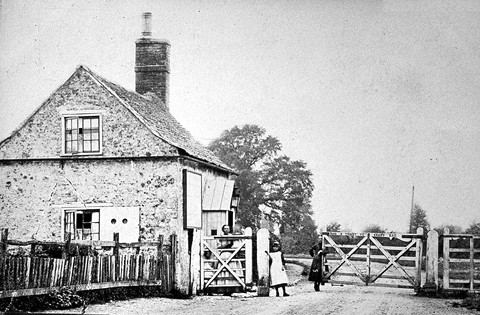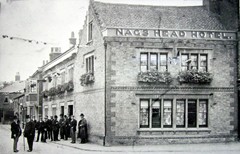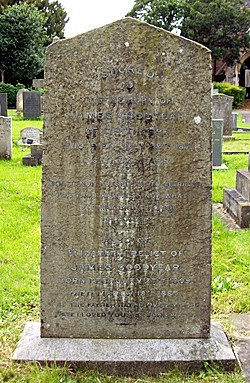|
James Goodyear 1810-1871 One of the unluckiest men in the
history of Bourne must have been James Goodyear, born in 1810 in humble
circumstances who began his working life in a menial position but rose to
become one of the most influential farmers in the district. But although
blessed with prosperity, his life appears to have been a series of
misfortunes and three incidents in his life are well recorded to
illustrate the old adage that money is not everything.
A few weeks later, on Monday 15th November, Goodyear sent two lads on an
errand with a horse and cart from Bourne to Cawthorpe. The boys, William
Stevenson, aged 11, and his eight-year-old brother George, were the sons
of Richard Stevenson, a tailor, of Star Lane (now Abbey Road). When they
reached the toll bar in North Road, situated at what is now the junction
with Mill Drove, the horse took fright and bolted. George was riding on
the shafts, a common practice at the time, and was thrown to the ground
and when Henry Bullock, of Dyke, arrived to help, he was quite dead.
William, who was riding on the horse, managed to stay on and keep hold
until the animal halted near the spinney at Cawthorpe where he too was
thrown off and seriously injured. Medical assistance was given but he
remained in a precarious state for several days. Goodyear himself died in tragic circumstances on Friday 28th July 1871 at the age of 62 after being gored by one of his own bulls at his farm premises in Star Lane. The previous Monday, Mr Edward Smith, a castrator, of Thurlby, was called to operate on the bull and Goodyear went into the pen alone but the bull broke loose from its fastenings, snapping a chain attached to a manger that gave way. There was a ring in the animal’s nose but it was not secured at this time and it was supposed that Goodyear was about to attach a staff to the ring to lead the bull out of the pen when it charged, pinning him to the door post, its horns around him and its head pressing heavily against his body. The bull then pushed him out into the farmyard and thrust its head against him again but Mr Smith grabbed a hayfork and held it at bay while Goodyear managed to crawl away. The bull was then safely tethered until the arrival of Quartermaster-Sergeant Harrison from the Bourne Rifle Corps who despatched the animal with one shot through the forehead with his rifle.
An inquest was held at the Windmill Inn [in North Street] the following
day before Mr William Edwards, coroner. Mr Frederick John Glencross, a
surgeon from Brook Lodge, Bourne, said that he had been called to the farm
immediately after the accident and had tended Goodyear until the time of
his death. There were several contusions on the abdomen, chest and back, a
small scalp wound and a slight contusion of the left arm but no fracture.
The immediate cause of death was the bruising of the intestines and
peritoneum, with exhaustion. The jury returned a verdict of accidental
death.
Henry Goodyear, his son, who inherited the farming business, suffered a similar mishap 25 years later but survived. On Saturday 21st November 1896, he was moving a three-year-old bull to a fresh shed on his farm in the Austerby when the nose ring at the end of the securing chain fell out and the animal got loose and pinned Goodyear between its horns against the metal frame of the manger. He struggled to get underneath the manger but the bull attacked him again and gored him badly, and then tossed him over its back. A farm labourer, Benjamin Rogers, ran to help and after squeezing himself between the bull and the wall, attacked it with a pitchfork until it ran bellowing from the shed. Mr Goodyear was taken into the house with serious lacerations to his body in several places, one of which exposed a main artery. Dr George Blasson was called and treated his injuries from which he eventually recovered. At the annual dinner of the Bourne Fat Stock Society the following month, a collection of £1 3s. [£75 at today's value] was made for Rogers in recognition of his bravery in risking his life to save Mr Goodyear.
Go to: Main Index Villages Index
|



